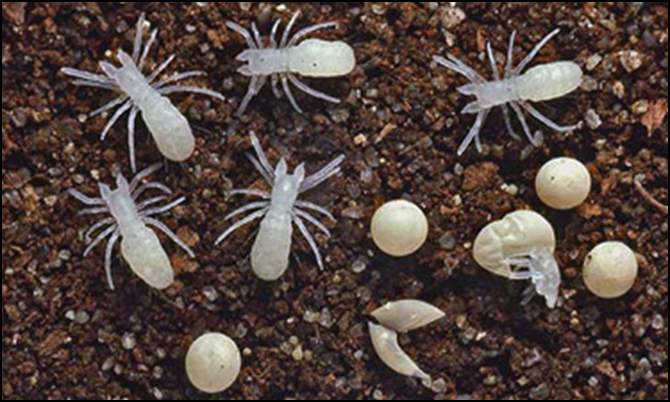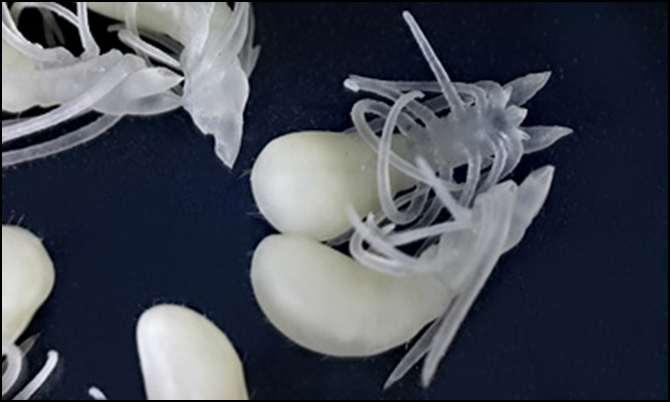Growth and Development
[This section contributed by Jack O. Brookhart, Denver Museum of Nature and Science]
Postembryonic development in the Solifugae has been observed in only three of the 12 families of solifuges. Observations of postembryos are rare; thus, little is known for certain about this development under natural conditions. Muma (1966) described hatching from the eggs to post embryo in Eremobates durangonus Muma. Newly hatched solifuge post-embryos are translucent, shiny, and white (Hingston 1925, Junqua 1966, Muma 1966, Cloudsley-Thompson 1977, Muma & Muma 1988, Punzo 1995). Chelicerae are poorly formed and lack denticles. The legs are not completely segmented, lack tarsi and tarsal claws. Malleoli are also absent. Eye spots are formed but the eye tubercle is not.
The newly hatched post embryos remain massed together, wriggling slightly. Within ten days the cuticle begins to form and shows initial signs of pigmentation. In laboratory settings the time from hatching to first instar ranges from 9 to 12 days for two species of Eremobates (Muma 1966, Muma & Muma 1988, Punzo 1998a, 1998b).
First instar nymphs resemble adults except for the absence of malleoli on the trochanter of the fourth leg (Muma 1966). These nymphs remain clustered but are more mobile than the post embryos. They appear not to feed and will not do so until they molt to the second instar stage. As a caveat it should be noted that almost all observations have been conducted under laboratory conditions.
Ecdysis (molting) to the second instar increases activity, aggressive behavior is apparent, and they frequently cannibalize each other (Muma 1966, Punzo 1995). In the laboratory, second instars feed on small invertebrates, termites, springtails, eggs (both fertilized and unfertilized), and wingless fruit flies. Dispersal from the original egg mass occurs at this stage. Hunting behavior of 3rd or 4th instar juveniles was reported by Conrad & Cushing (2011).
Only Punzo (1995, 1998a, 1998b) has successfully reared a solifuge (Eremobates mormonus Roewer) from egg to adult. He described the first two stadia and noted the effect of temperature and relative humidity on survival rates. In a laboratory setting he found the number of instars to be eight. Estimates for species in other families range from four to eight instars before adulthood (Junqua 1966, Muma 1966, Wharton 1987, Punzo 1998b).
The time of development for each stage depends on temperature, relative humidity, and time of hatching with 30°C and 50-70% relative humidity being optimal for the species of Eremobates studied by Muma (1966) and Punzo (1995). Junqua (1966) describes Othoes as over wintering as a penultimate and I have made similar observations in several species of eremobatids collected from pitfall traps (unpublished).


Top: Eggs and larvae of Eremobates sp.(Eremobatidae) (photo by Warren E. Savary).
Bottom: Larvae of Galeodes sp. (Galeodidae) (photo by Alexander V. Gromov).
